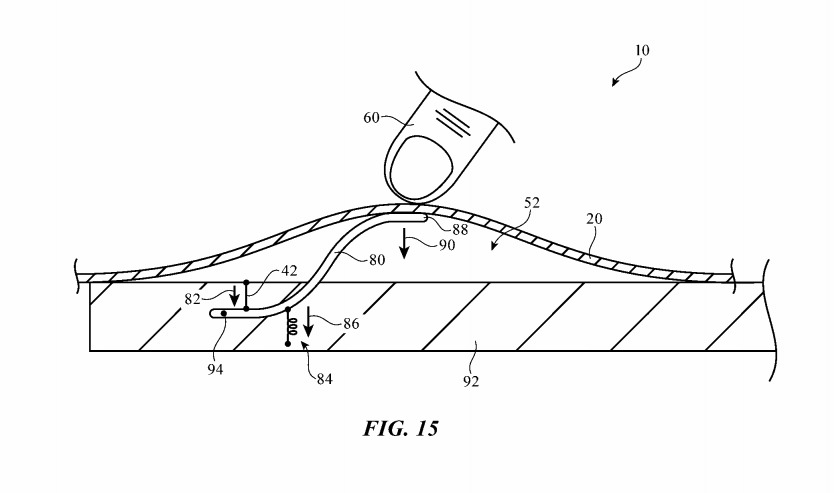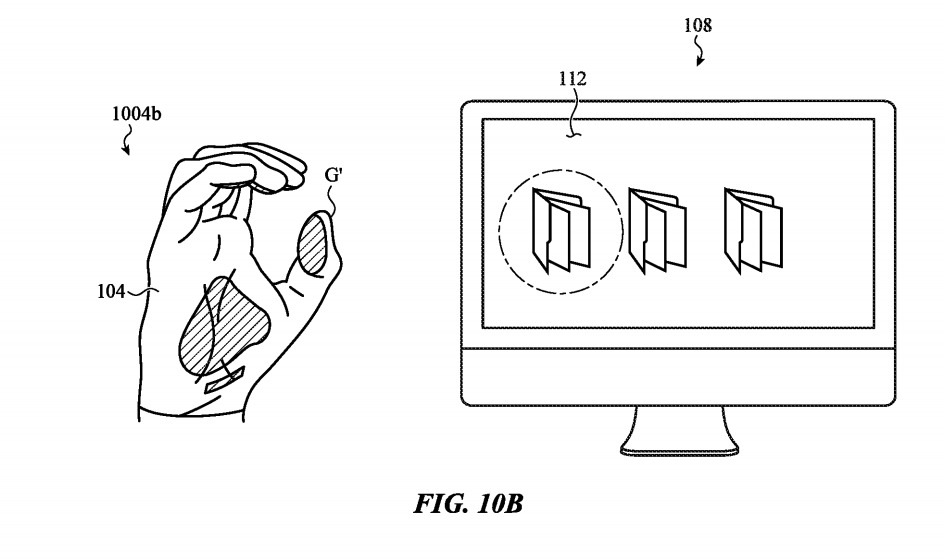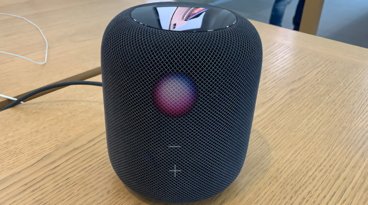Smart gloves with motion and touch detection could control your future Mac
Apple is exploring ways to make smart clothing, such as gloves and other wearable items, by creating ways for users to interact with devices by touching or moving clothes and accessories.
So far, Apple has seen success with its wearable devices, with its AirPods and Apple Watch generating high sales for the company. To create more wearable products, Apple has to come up with ways to insert wearables into everyday life, and one way to accomplish that is to make clothing smart.
In a pair of patents granted by the U.S. Patent and Trademark Office on Tuesday, Apple is looking at two different concepts to the problem, with each enabling users to exert control on a system in slightly different ways.
The first patent, "Items with wire actuators," Apple suggests the use of actuators within clothing to provide some level of haptic feedback to the user. In one example from the patent, Apple proposes an actuator could be employed to vibrate when a user presses a "key" on a fabric-covered keyboard, giving a level of physical feedback to confirm a button press.
Apple raises the point that an actuator may be "too bulky" or power-consuming for use, or may not be "compatible with the structures used in forming an item of interest." In short, Apple wants to make the actuators and connected elements as small or as seamless as possible, to minimize their appearance to the user.
The actuators could be connected in such a way as to have a conductive strand of material, which can be used to alter the state of the actuator between positions. The strand can be connected to conductive threads within fabric to a main control system.
In some examples, applying current to the conductive strand could make it generate heat and allow it to expand, or for current to be removed for it to cool and contract. By changing the length of the strand in this method, this can be used to affect other elements connected to it.
For example, a strand could be connected to a movable member that can force elements to shift. This could be used to create a pop-out "button" for the user to press in fabric, one which could flatten down once current has been turned off.
The actuator could also be paired with various switches and sensors, which could be used to apply current to the conductive strands.
Magnetic-field-based actuators are also an option, one where the conductive strands could be made into a non-circular cylinder. By being an oval in shape, the current application could pull the cylinder into a circular shape, with the change serving as haptic output once again.
The patent lists its inventors as John S. Camp, Robert L. Coish, Kyle J. Nekimken, John A., Porcella, and Michael A. Damianakis.
Smart Gloves
A second patent called "Wearable interactive user interface" is more straightforward in its application, with it largely centering around how to use gloves or similar elements to monitor inputs from a person's hands. Though the patent talks about how the idea could work in a general sense, it refers to gloves and hands a lot, indicating its primary usage is in that area.
The patent talks about how there can be multiple sensing regions on a human hand, for example, such as the palm of the hand, fingertips, or the extension of the finger itself. By employing sensors at the tips of the fingers, or others capable of detecting if a finger has been bent or straightened, these inputs could be used to control another device, such as an AR scene within an app.
These sensors could include the use of an accelerometer, gyrometer, capacitive array, touch-sensitive surfaces, strain-based switches, and force sensors. These can be used for each finger in concert, giving multiple inputs for a system to monitor and react to, depending on the application.
Further, by detecting the position and motion of the hand, as well as the proximity of fingertips to the palm and each other, gestures could also be employed on the controllable device. Apple proposes in one set of images a hand motion could be used to select a folder from a list, with a gripping motion to confirm a selection, while holding a hand in a mouse-like claw grip and moving it could offer a similar interaction to moving a physical mouse.
The intended gloves are also suggested to include haptic feedback systems, which can include stiffening elements affected by magnetic forces or temperature changes, or even flexible bladders. This would give users a physical response, such as resistance when "gripping" a file or folder on a controlled device.
Part of the patent also discusses how the glove should adhere to the wearer, as a shifting of the garment would throw off attempts to sense the user's digits and palm as their relative positions will have changed. It is suggested the use of bladders again, as well as portions in the garment's creation that could "exert a suction force on the user."
The patent's authors are identified as Paul X. Wang, Zheng Gao, Reza Nasiri Mahalati, and Ray L. Chang.
Smart fabric is a big focus of Apple research
Apple files numerous patent applications on a weekly basis, but while the existence of a filing suggests areas of interest for Apple's research and development efforts, they do not guarantee the concepts will appear in a future product or service.
There have been a number of occasions where Apple has explored smart clothing options, and gloves in particular. In January 2019, a patent covered "fabric-based devices with force sensing," with particular attention towards gloves, while April 2019 brought with it a similar concept in another patent application.
Another 2019 filing had Apple using elements in an open glove design to lightly squeeze the sides of a user's fingers to extend the fingerpad downward, to increase feedback when typing on a surface that doesn't offer haptic messaging, such as a tablet display.
In February 2020, Apple proposed systems for adjusting how tight a piece of fabric is at specific locations, and the use of fabric domes and conductive threads to create switches in clothing. Conductive threads have also repeatedly appeared in patents, chiefly to connect components installed onto a fabric panel together, without any distracting wiring being visible.
 Malcolm Owen
Malcolm Owen
















 Amber Neely
Amber Neely
 Thomas Sibilly
Thomas Sibilly
 AppleInsider Staff
AppleInsider Staff
 William Gallagher
William Gallagher

 Christine McKee
Christine McKee









9 Comments
Lame! No need for a glove. Been using contactless computer input for many years, via hand recognition movement and tracking.
Nintendo PowerGlove all over again... ;)
It’s going to be better then your mouse!